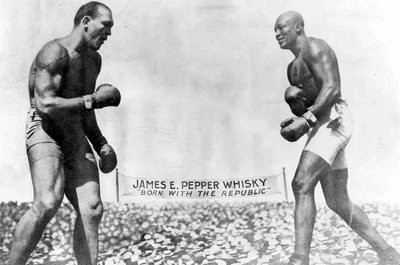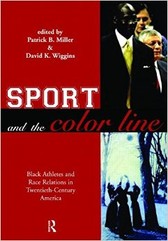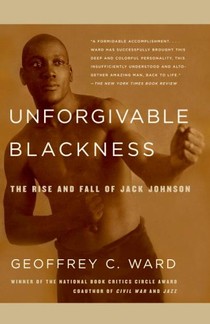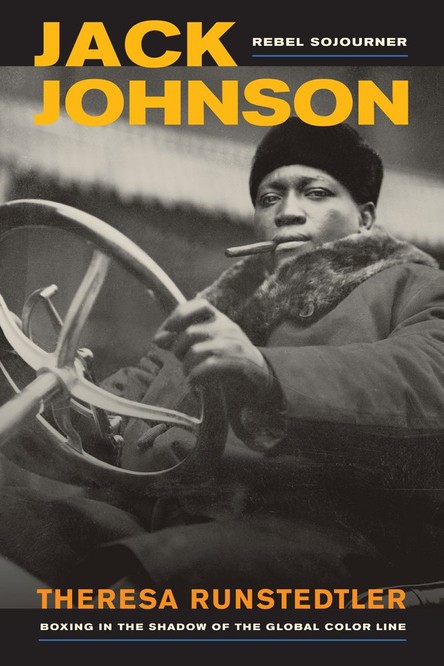Jack Johnson Defeats James J. Jeffries, July 4, 1910
Introduction
Text-to-speech Audio
Images
Jeffries (right) and Johnson (left). Johnson would retain the title of heavyweight champion until 1915

Learn more about sports history and race: Sport and the Color Line: Black Athletes and Race Relations in Twentieth Century America

Geoffrey Ward, Unforgivable Blackness: The Rise and Fall of Jack Johnson

Theresa Runstedtler, Jack Johnson, Rebel Sojourner: Boxing in the Shadow of the Global Color Line

Backstory and Context
Text-to-speech Audio
Johnson’s victory over Burns was considered a hollow victory at best. The new champion was met with waves of ridicule that he didn’t beat the true champion, James J. Jeffries, who had retired in 1905 undefeated. After much media attention, and the promise of a large sum of money for the fight, Jeffries agreed to come out of retirement to fight. The following summer in 1910, the new and old champions met in the ring in Reno, Nevada.
The fight was originally going to take place in California, but prize fighting was illegal in many states, and the church’s intervention held influence. Swift interaction by promoter Tex Rickard saved the fight, moving it to Reno instead. It would be the first time an arena was specifically crafted for a fight. Jack Johnson won the fight in the 15th round, Jeffries’ seconds throwing in the towel after he was knocked down a third time. The place where the fight took place is now a junkyard.